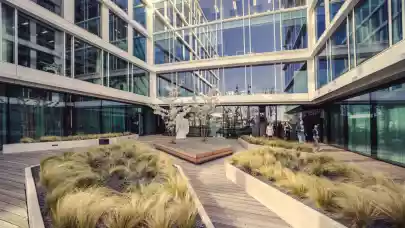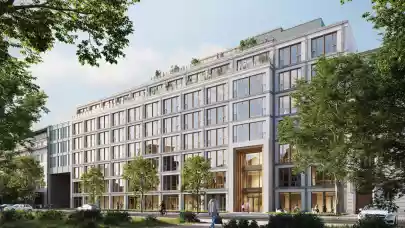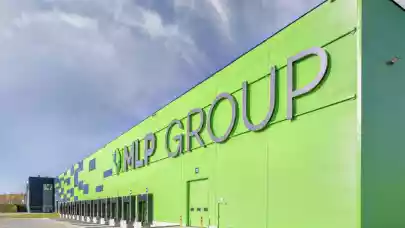
Skanska plans to build the first climate-neutral office building in the CEE region. The developer is going to use a solution based on structural timber, as wood is a natural resource that will help reduce the carbon footprint. Construction works on the office building located on Radlická Street in Prague are planned to begin in 2023. Skanska has made a global commitment through a climate target of net-zero carbon emissions by 2045, with a 50% reduction by 2030.
Together, building and construction are responsible for 39% of all carbon emissions in the world, with operational emissions (from energy used to heat, cool and light buildings) accounting for 28%. The remaining 11% come from embodied carbon emissions or ‘upfront’ carbon that is associated with materials and construction processes throughout the whole building lifecycle.
The office building which is under design and aims for climate neutrality is going to be located on 13,000 sqm land on Radlická Street in Prague 5 in close proximity to a subway station. The leasable space is estimated to be 30,000 sqm.
“To achieve our goal of a climate-neutral building, besides other highly efficient and sustainable solutions, we are going to replace structural elements from concrete to timber. Wood has amazing qualities. One of the best, especially in the current context of accelerating climate change, is the fact that the material has a very low carbon footprint. Wood not only stores CO2, it can also be re-used when the lifecycle of the building is over. The use of wood is a part of an ongoing natural lifecycle,” said Alexandra Tomášková, Executive Vice President Operations Hungary & Czech Republic at Skanska Commercial Development Europe.
Why is wood such a sustainable material?
Trees take carbon dioxide from the air and while converting it into wood they release oxygen back into the atmosphere. But the older the tree gets, the slower it grows, using less and less CO2. Eventually, it starts to decay, releasing CO2 back into the air. If we use the wood before the end of its lifecycle as a material, CO2 stays preserved in the timber for decades.
Using wood instead of steel or concrete means less fossil fuel consumption and, as a result, less greenhouse gas emissions. Wooden construction is easily prefabricated, reducing the amount of work that needs to be done right on the site. In addition, core construction from timber is faster to build than concrete, being also easily recyclable.



